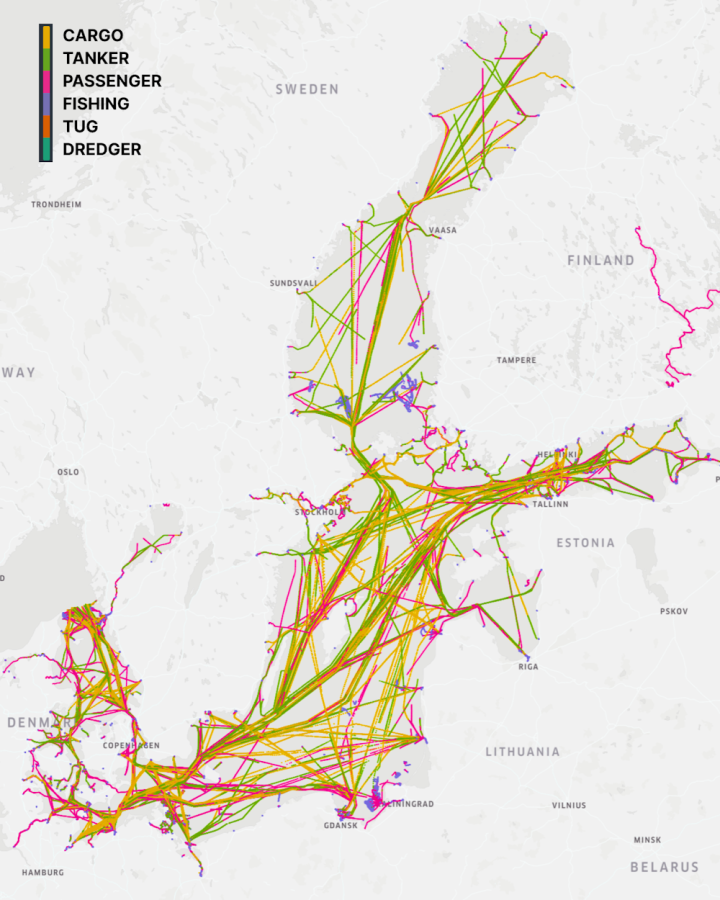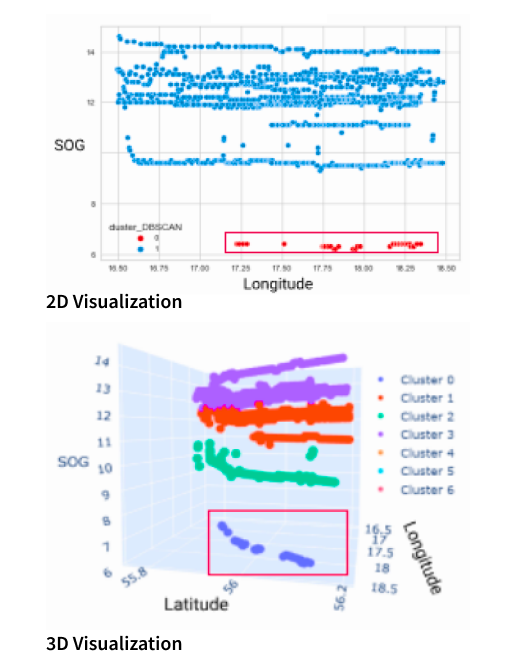How can AI detect abnormal behaviors of a ship?

Maritime transportation is crucial to the global economy. The United Nations reports that sea transport accounts for 90% of worldwide trade, making it the most important mode of transportation in terms of volume and value. The global quantity of ships leads to a significant number of maritime occurrences, including collisions, sinkings, and criminal activities including piracy, smuggling, and illegal fishing. In 2019, the European Maritime Safety Agency (EMSA) reported 3,174 maritime incidents, resulting in 95 severe casualties, 53 fatalities, and over 900 injuries. Therefore, detecting abnormal behavior of ships is an important task.
My research journey began in January 2022, when I was assigned to the maritime project ”AI-ARC,” funded by the European Union’s Horizon project (https://ai-arc.eu). This project aims to develop a Virtual Reality-based platform equipped with sophisticated AI-based services, including big data analysis and visualizations, ice pack detection, sea-ice movement prediction, oil spill detection, maritime traffic prediction, and sensor fusion. These innovations are designed to enhance the safety and situational awareness of maritime stakeholders, such as local authorities, the Coast Guard, shipping companies, and port management agencies. The University of Turku’s Algorithmic Computational Intelligence Research Group (ACI), one of the 15 project partners, is responsible for developing an AI-based service to detect abnormal behavior of ships sailing in the Baltic Sea. The platform was successfully tested with practitioners and end-users during two demonstration events in August and October 2023 in Sweden and Iceland. In this blog post, I will describe my contributions to the abnormal behavior detection service as a member of the ACI group in the AI-ARC project. Additionally, I will discuss the limitations and future research directions, offering a reliable starting point for anyone interested in maritime data analysis. I hope you enjoy reading it.
Let’s begin by discussing the Automatic Identification System (AIS), an automatic tracking system mandatory for ocean-going ships since 2004. Ships must transmit AIS data during their journeys, which includes both dynamic and static information. Dynamic information, such as speed, course, and draught, changes over time. In contrast, static information, like ship ID, ship name, and ship type, remains constant. This AIS data served as my primary resource and input for developing an abnormal behavior detection service. Maritime incidents and illegal activities, such as smuggling and unauthorized fishing, are often identified by analyzing AIS data. By mapping and exploring historical AIS data of abnormal behavior cases, I realized that unusual and unexpected behavior of a ship often involves sudden changes in speed and course. Therefore, the abnormal behavior detection system must recognize any irregularities in the dynamic information of a suspected ship.
Although I had good access to AIS data, analyzing a large number of data points was a significant challenge. Nearly 2,000 ships transmit their movement information (Figure 1) every day in the Baltic Sea, requiring me to work with big data. Initially, I applied statistical methods to detect abnormalities in AIS data, but this approach proved inefficient for real-time monitoring due to the extensive computing time required. I then decided to leverage supervised Machine Learning (ML) methods, which are more suitable for training models on the normal behavior of ship patterns and subsequently detecting any unusual changes in the dynamic information of a ship. However, supervised ML models necessitate labeled data and substantial computational resources, especially when learning from a large number of ship movement observations. Ultimately, I found a solution in ”Clustering-based algorithms,” a specific type of unsupervised ML method that could address these challenges. This approach enabled the detection of abnormal ship behavior while overcoming the limitations posed by the volume of data and computational resource constraints.

Figure 1. AIS data visualization in the Baltic Sea.
Unsupervised algorithms in Artificial Intelligence (AI) are a type of ML-based method capable of learning from data without human intervention. Unlike supervised learning, unsupervised ML models work with unlabeled data, identifying patterns and insights without explicit direction. In this project, we used a popular clustering-based method called “DBSCAN” to detect irregularities and unusual ship behavior. DBSCAN divides data points into clusters or groups, where points in the same group share similar characteristics, and points in different groups exhibit distinct properties. Clusters are dense regions in data space, separated by areas with lower point density. The DBSCAN method is based on the concepts of ”clusters” and ”noise.” Essentially, each point in a cluster must have a neighborhood of a specific radius containing at least a certain number of points. This principle allows DBSCAN to effectively identify abnormal data points, as they differ from regular points and have lower densities.
To illustrate how the DBSCAN method detects abnormalities, consider an example in the Baltic Sea. By analyzing historical AIS data, we can measure the average speed and course of ships in each region. When a new vessel enters the region and behaves differently, its speed and course data points from different clusters, and DBSCAN identifies them as noise points. Consequently, the system issues a warning, indicating something unexpected. In Figure 2, I visualized the results from the abnormal behavior detection system, showing that suspicious ship movement data points differ significantly. For instance, while most vessels’ speed data points range between 10-14 knots, the target ship moves at a slower speed (6-8 knots). Not all ships detected by our system are necessarily involved in illegal activities; a ship might experience technical faults and need assistance. However, local authorities must investigate all detected ships to ensure maritime safety.

Figure 2. Clustering results – two and three-dimensional inputs.
My research journey does not end here; I plan to use sensor fusion technology to enhance the system’s accuracy and reliability soon. Sensor fusion technology combines data from multiple sensors, integrating and processing different data sets to create a more comprehensive, accurate, and useful representation of the environment than could be achieved with AIS sensors alone. A significant challenge is that smugglers are actively employing tactics to evade monitoring systems. For instance, they often turn off the AIS system to conduct illegal activities, such as human and drug trafficking. Ships that do not transmit AIS data are known as “Dark Ships,” and detecting them is extremely challenging. This is where sensor fusion technology becomes essential. We aim to detect these dark ships by combining AIS data with satellite images.
To me, being a “data analyst” is not merely a job for earning money; it is an opportunity to make the world a better and more enjoyable place to live. As a data analyst, I seek to utilize electronic equipment and systems, such as satellite radars and AIS, to improve maritime situational awareness and ensure the safety of oceans and seas for all marine stakeholders. If this topic has piqued your interest, you can explore my published articles in prestigious journals and conferences on my UTU page: Farshad Farahnakian UTU Page.
Farshad Farahnakian
The writer is a Doctoral Researcher at the University of Turku.
E-mail: farfar@utu.fi